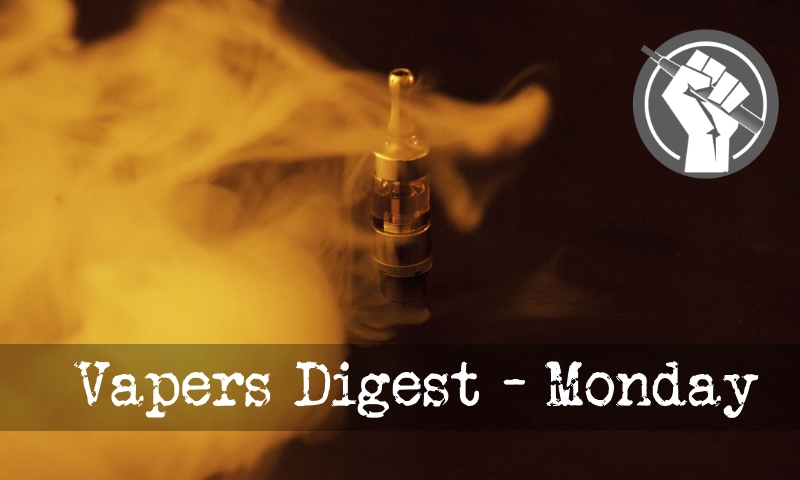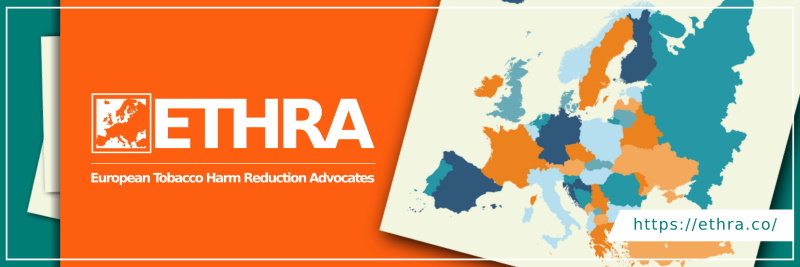Vapers Digest 15th January

Monday’s News at a glance:
Include Consumer Voices – Fears Australia’s world-first vaping crackdown will drive more people to smoke cigarettes – COP10 & WHO’s Vaping Stance: What’s Wrong? – Why No One Smokes In Sweden – Smoke-Free Partnership Alumni Beclown Themselves… Again – WVA Calls Out EU Commission’s Hostile Stance – Fifth Circuit Court Rebukes FDA’s PMTA Process – QFG slams WHO’s latest report as ‘unscientific’ – UMass study says e-cigarettes with nicotine can help people quit smoking – Declines in cigarette smoking among US adolescents and young adults
Include Consumer Voices
Dave Cross, Planet of the Vapes
The Coalition of Asia Pacific Tobacco Harm Reduction Advocates (CAPHRA) is calling for the inclusion of consumer voices in the decision-making process around tobacco harm reduction policies. CAPHRA believes that the experiences and perspectives of consumers are crucial in shaping effective and sustainable policies that can significantly reduce the harm caused by combustible tobacco products.
The Coalition’s call comes in the wake of recent regulatory developments in countries like Thailand, the Philippines, and New Zealand.
Fears Australia’s world-first crackdown
Will drive more people to smoke cigarettes – Daily Mail
Australia’s world-first crackdown on vaping could drive more people to smoke tobacco or use black market vapes, a Health Department analysis has warned.
New legislation introduced from January 1 bans the sale of nicotine vapes in specialised retailers and convenience stores. Now, Australians will need to seek a prescription from their GP to buy a vape from a chemist.
However, this is estimated to require almost one million GP appointments for 450,000 Australians, at a time when the medical industry is suffering from a lack of doctors and bulk billing services.
WHO’s Vaping Stance: What’s Wrong?
Vaping Unplugged Podcast With Martin Cullip Ep. 39
In today’s episode of Vaping Unplugged podcast, we explore one of the most debated issues in THR: the World Health Organization’s stance on vaping, within the scope of the Conference of the Parties (COP) meeting.
Joining us is Martin Cullip, interviewed by Michael Landl, the director of the World Vapers’ Alliance (WVA). Martin, an expert in his field, serves as the International Fellow for the Consumer Center at the Taxpayers Protection Alliance (TPA). His extensive experience over a decade covers free market and consumer issues, particularly focusing on THR.
Call to action! TRIS on Finland’s proposal to regulate nicotine pouches as tobacco products closes on 17 January.
Leave your comments in the box.https://t.co/7QASksxFkA
For more on the bill, see @VapersFinland ‘s critique:https://t.co/JaajpJ6Phd
— European Tobacco Harm Reduction Advocates (@europethra) January 13, 2024
.@TheIBVTA has warned of an increase in tobacco and illicit vape use in the event of a ban on disposable vapes https://t.co/PjSpbDefTG
— Better Retailing (@BetterRetailing) January 15, 2024
Why No One Smokes In Sweden
Bloomberg Quicktake
As governments around the world strive to reduce smoking rates, Sweden has become a controversial case study in how best to do so. As of 2022, only 5.6% of the population still smoked. That’s the lowest percentage in Europe. Many give credit to snus, small nicotine-filled pouches placed under the lip. Snus makers say they’re safer than cigarettes. But policymakers and health advocates are divided over their use.
Smoke-Free Partnership Alumni
Beclown Themselves… Again – Joseph Hart
Paranoia is an ugly thing. It comes in many forms, and if you’ve seen it up close among friends or loved ones, you’ll know how corrosive and isolating this thought process can be.
However, the Brussels Times seemed happy enough to hand over an editorial to a Smoke-Free Partnership footsoldier so he could weave some deluded and baroque conspiracy theories about Big Tobacco on their website. Let’s dive in.
WVA Calls Out EU Commission’s…
Hostile Stance on Harm Reduction
Brussels, 15.01.2024 – The World Vapers’ Alliance (WVA) is bringing critical attention to the recent findings from the public consultation on the EU Tobacco Products Directive (TPD), analysed by Snusforumet, which starkly contrasts with the European Commission’s current approach to harm reduction.
The consultation results reveal a substantial consensus among citizens, NGOs, and scientific institutions on the effectiveness of harm-reduction products in assisting smokers to quit. A striking 77% of respondents recognise these products as helpful smoking cessation tools, while a mere 9% of EU citizens disagree. Furthermore, an overwhelming 82% of respondents refute the notion that new nicotine alternatives pose a risk to public health, with only 6% perceiving them as a threat.
Blistering Decision
Fifth Circuit Court Rebukes FDA’s PMTA Process | RegWatch (Live)
A U.S. federal appeals court issues a scathing rebuke of FDA’s authorization process for flavored nicotine vaping products, reversing marketing denial orders for two mid-sized vape manufacturers and ordering the regulator to take a fresh look at their PMTA applications.
Could this ruling upend the FDA’s de facto ban on nicotine vaping products? Find out in this live edition of RegWatch by RegulatorWatch.com.
QFG slams WHO’s latest report
As ‘unscientific’ – Quit For Good
A public health advocacy group based in the Philippines has criticized the latest report of the World Health Organization (WHO) on the use of electronic cigarettes, saying the global body undermines the significant progress made in public health over the past two decades as smokers transitioned to smoke-free products.
Dr. Lorenzo Mata Jr., president of Quit for Good, said the WHO’s continued demonization of e-cigarettes disregards the wealth of scientific evidence demonstrating that smoke-free alternatives such as e-cigarettes, heated tobacco and snus have helped millions of smokers in countries like the United Kingdom, the United States, Japan and Sweden successfully quit smoking.
UMass study says e-cigarettes…
With nicotine can help people quit smoking – James Foster
Nicotine-based electronic cigarettes are more effective in curbing smoking habits than typical nicotine replacement therapies, according to a University of Massachusetts Amherst review of health literature.
The review by Prof. Jamie Hartmann-Boyce looked at all available evidence to analyze the effects e-cigarettes with nicotine have when used to help people quit smoking. This review is updated monthly based on new information
Declines in cigarette smoking …
Among US adolescents and young adults:
Pierce et al. [1] examine population-level trends in e-cigarette use and cigarette smoking among 17-24 year olds, examining whether e-cigarette use is related (and therefore might explain) the historic declines in smoking. The authors conclude: “our findings do not support the previously suggested evidence that this increase in e-cigarette vaping was associated with a more rapid decline in adolescent cigarette smoking.”
However, the authors’ conclusions are based on questionable methodological decisions and flawed analyses. Most notably:
On this Day…2023
A look back at how things have moved on or otherwise…
Metal Risk Overblown
Dave Cross – Planet of the Vapes
Professor Soulet and Professor Sussman have produced a paper that is a critical review of studies claiming to have found heavy metal toxic risks in e-cigarette vapour. The pair are recognised as leading experts in vape related research. They found evidence that research teams which found a toxic risk had adopted poor research methodology that led to errors, produced results divorced from real world vaping, or overestimated exposure levels.
Heavy metals can poison by building up in the soft tissues of the body. Many of them are essential to bodily functions in small amounts but pose a hazard when they build up. Primary metals that cause concern:
Rates Prove Opponents Wrong
Dave Cross – Planet of the Vapes
The falling youth vaping rates prove activists wrong, says the Coalition of Asia Pacific Tobacco Harm Reduction Advocates (CAPHRA). A new survey from the United States’ Centres for Disease Control and Prevention (CDC) and Food & Drug Administration (FDA) which suggests that youth vaping rates appear to be dropping, compared to pre-pandemic levels.
“Alarm bells about a United States’ youth vaping epidemic have now been proven to be false,” says Nancy Loucas, Executive Coordinator of CAPHRA.
“CAPHRA has long been calling out Bloomberg’s anti-vaping and anti-nicotine activism. We now have government data that completely contradicts their claims of an exploding youth vaping epidemic,” added Ms Loucas.









